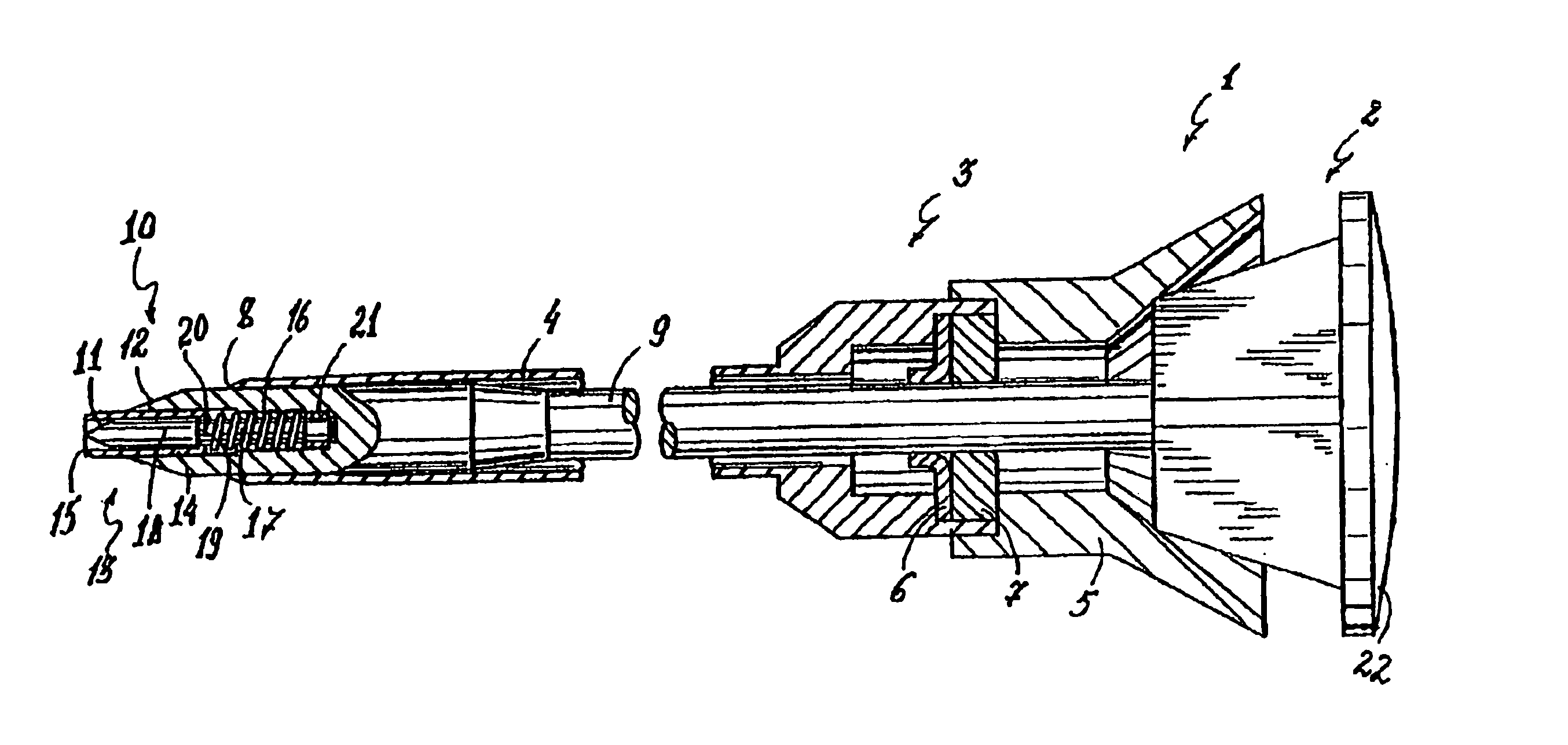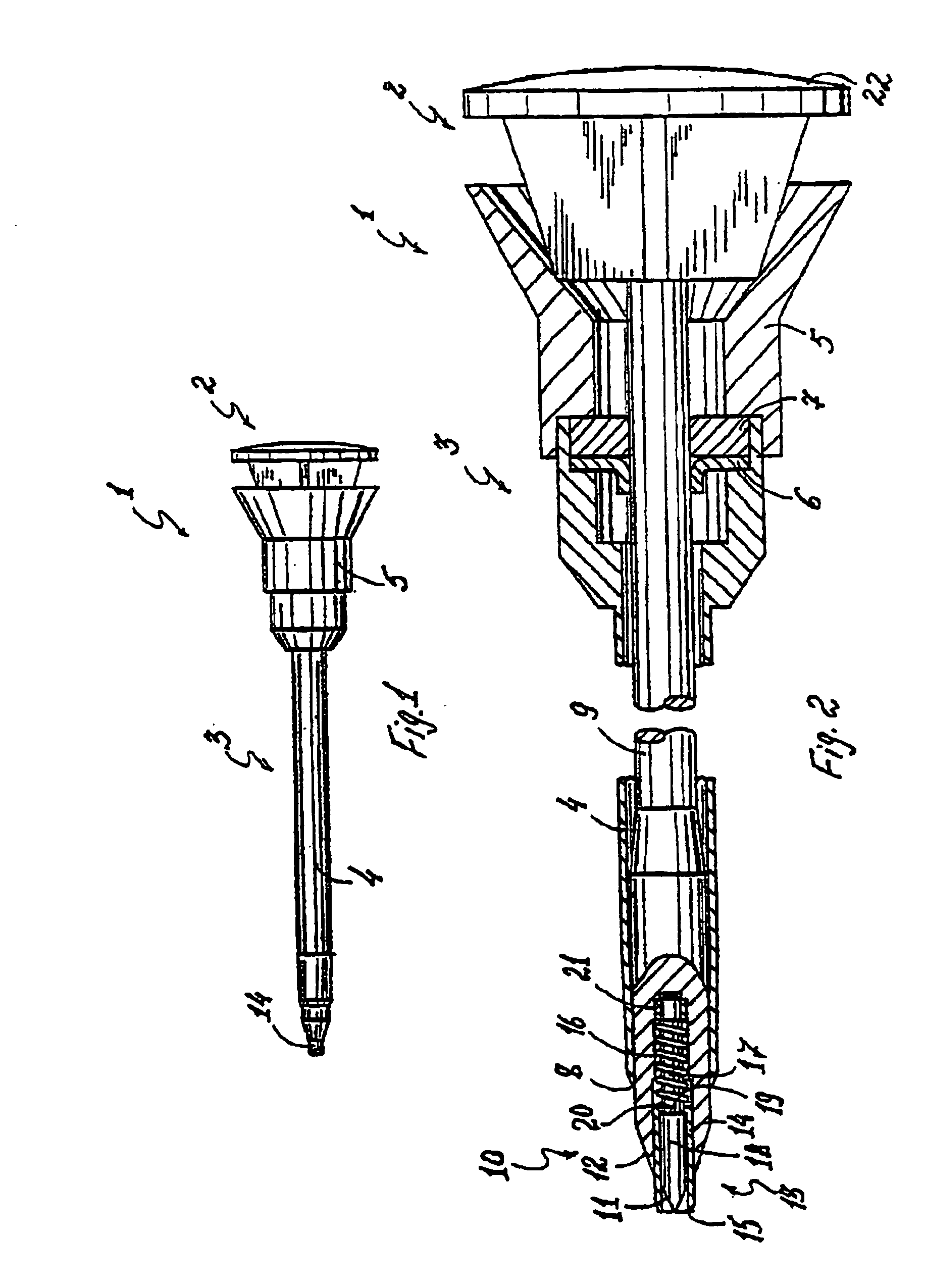Safety trocar assembly
a trocar and safety technology, applied in the field of safety trocar assembly, can solve the problems all known solutions do not eliminate the problem of internal organ injury, and the insertion of the trocar into the body cavity can be accompanied, so as to reduce the resistance of body tissue, facilitate the passage of the trocar through the body cavity wall, and reduce the injury of the body cavity wall
- Summary
- Abstract
- Description
- Claims
- Application Information
AI Technical Summary
Benefits of technology
Problems solved by technology
Method used
Image
Examples
Embodiment Construction
[0076] Safety trocar assembly is intended for making orifices in body cavity wall and generation of conditions for subsequent introduction of instruments into a body cavity.
[0077] Before addressing specific implementations of the present invention in detail, it should be noted that the invention will be presented with reference to numerous examples, each of which illustrates one or more preferred feature of the invention. These various preferred features may each be used individually to advantage with an otherwise conventional trocar. In most preferred implementations, however, multiple preferred features are combined to provide a trocar with greatly enhanced levels of safety to the patient and / or professional staff, and / or to provide numerous other advantages as will become clear from the following description.
[0078] Turning now to the Figures, FIGS. 1 and 2 illustrate a first embodiment of a trocar assembly 1 in which a retractable shield 14 is deployed to selectively shield onl...
PUM
 Login to View More
Login to View More Abstract
Description
Claims
Application Information
 Login to View More
Login to View More - R&D
- Intellectual Property
- Life Sciences
- Materials
- Tech Scout
- Unparalleled Data Quality
- Higher Quality Content
- 60% Fewer Hallucinations
Browse by: Latest US Patents, China's latest patents, Technical Efficacy Thesaurus, Application Domain, Technology Topic, Popular Technical Reports.
© 2025 PatSnap. All rights reserved.Legal|Privacy policy|Modern Slavery Act Transparency Statement|Sitemap|About US| Contact US: help@patsnap.com



